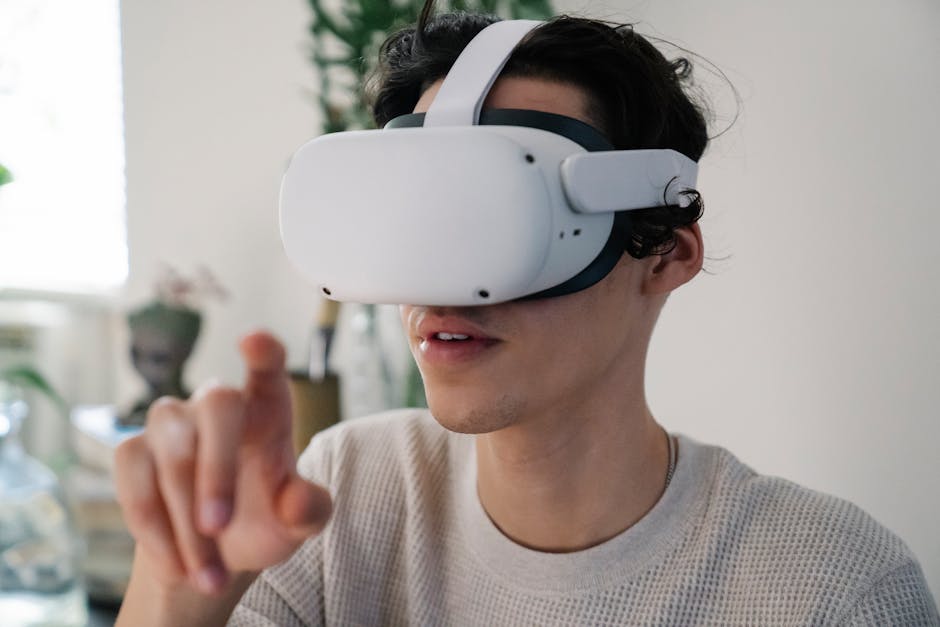Unleash Customer Engagement With Augmented Reality In Your Small Biz
In the rapidly evolving landscape of customer engagement, small businesses are continually seeking innovative ways to stand out from the competition. Enter augmented reality (AR) — a technology that has been gaining traction for its potential to create immersive experiences that captivate customers. From furniture showrooms that allow customers to visualize how a piece fits into their home, to retail shops offering virtual try-ons, AR has proven to be a powerful tool for enhancing customer engagement. Let's delve into how small businesses can harness augmented reality to unleash immersive experiences that can redefine their interaction with customers.
The Rising Relevance of Augmented Reality

Augmented reality blends digital elements with the real world, creating an enhanced experience that can drive customer engagement, also called customer experience (CX). With the advent of smartphones and AR-enabled applications, customers now have the power to interact with brands in ways that were unimaginable just a decade ago. According to a study by Statista, the global augmented reality market is expected to grow significantly, reaching approximately $198 billion by 2025. This rapid growth signals a bright future for small businesses that embrace AR to boost their customer connections.
Why Augmented Reality Matters for Small Businesses

Small businesses often face challenges that larger companies do not, including limited marketing budgets and fewer resources to create memorable customer experiences. AR provides a cost-effective solution by enabling small business owners to create unique, memorable interactions without the need for extensive physical setups. This distinctive value proposition can foster customer loyalty and drive repeat purchases.
-
Enhancing Product Visualization: AR allows customers to see how products would look in their own environment before making a purchase. For instance, a small furniture retailers can develop an AR app that enables customers to visualize how a sofa looks in their family room.
-
Improving Customer Interaction: Interactive AR features can engage customers in unique ways. A local café could develop an app that shares the history of its coffee beans as customers scan their packaging with their smartphones, creating an enriched storytelling experience.
-
Fostering Brand Loyalty: The novelty of AR can create buzz around a brand and encourage customer loyalty. Imagine a local boutique hosting an exclusive AR-based fashion show where customers can see models trying on outfits virtually. This not only enhances customer experience but also strengthens brand identity.
Getting Started With Augmented Reality

Implementing AR in your small business doesn’t have to be overwhelming. Here are some steps that can simplify the process:
1. Identify Opportunities

Start by analyzing your business model and identifying areas where AR can offer real value. This might mean focusing on your products, services, or the customer journey itself. Look for touchpoints where traditional engagement may fall short—be it in product demonstration, education, or even immersive advertising.
2. Partner with Experts

If your team lacks the technical skills to implement AR solutions, consider partnering with AR companies or hiring freelance AR developers who understand the nuances of app development. Websites like Upwork or Freelancer are great platforms to find talent without breaking your budget.
3. Select the Right Tools

There are various platforms that can help you create AR experiences without needing extensive coding knowledge. Tools like Blippar, Zappar, or Magic Leap offer user-friendly interfaces that enable small business owners to build AR experiences quickly.
4. Pilot and Collect Feedback

Before launching an AR feature to your entire customer base, consider running a pilot program with a select group of loyal customers. Use their feedback to refine the experience and ensure it resonates with your audience.
Case Studies of AR Success

Several small businesses have successfully adopted AR in their customer engagement strategies, setting great examples for others to follow.
IKEA Place

The IKEA Place app allows customers to visualize how furniture pieces will look in their homes through AR technology. Users simply scan their room, and the app places 3D models of various furniture items in the environment. This innovative approach not only helps customers make informed decisions but also enhances their shopping experience while reducing the need for returns.
Warby Parker

Warby Parker, the eyewear retailer, uses AR technology to provide a "Virtual Try-On" feature in its app, allowing customers to see how different glasses frames look on their faces using their smartphone cameras. This technology has made it easier for customers to make confident purchasing decisions, proving that AR can significantly enhance online shopping experiences.
Challenges and Considerations

While the potential of AR is vast, it’s not without challenges. Here are some considerations small businesses should keep in mind:
Technical Barriers

Implementing AR may require a certain level of technical sophistication that some small businesses may not possess. It's important to assess your team's capabilities and decide whether to upskill internally or seek external help.
Device Limitations

Not all customers may have access to the latest AR-enabled devices. Thus, ensuring that your AR experiences are optimized for a range of smartphones can help maximize reach.
Costs and Investment
Developing AR applications may require an upfront investment that small businesses need to plan for carefully. However, it is crucial to view this as a valuable marketing tool rather than an expense.
Real-World Applications of AR
As you learn about AR's benefits, consider these specific applications it can have in small businesses:
Retail and E-commerce
Retailers can use AR to enhance the shopping experience by offering features like virtual fitting rooms or enabling customers to visualize furniture in their homes.
For example, a local clothing shop could allow customers to see how outfits look on them through an AR app. This drives conversions and reduces return rates, as customers feel more confident in their purchases.
Food and Beverage
In the food industry, businesses can create AR menus that show interactive dishes, ingredients, and calorie counts. Customers can point their smartphones at a menu item to see a 3D representation of the dish, making dining out more engaging.
This innovative approach can also facilitate storytelling around your brand. Consider running a campaign that reveals the sourcing journey of your ingredients when customers scan items on your physical menu or packaging.
Tourism & Hospitality
Local travel agencies can leverage AR to provide immersive travel experiences that highlight attractions or destinations. Imagine tourists being able to visualize a tour through an AR app before booking their tickets.
This can elevate the customer experience while providing a competitive edge in the crowded travel marketplace. A cultural heritage center could create AR-based tours that entice visitors to learn more about local literature, history, or art.
Embracing the Future of AR in Customer Engagement
As augmented reality continues to evolve, the future looks promising for small businesses that choose to adopt this technology as part of their engagement strategy. The emphasis on enhancing customer experience is paramount, and AR provides an opportunity to stand out in a saturated market.
By innovatively leveraging AR, you can not only improve customer interaction with your brand but also enhance the value proposition of your offerings. As businesses become more focused on creating an unforgettable experience, AR could be the key to unlocking profound customer engagement.
Final Thoughts
As we've explored, augmented reality is a growing trend that can revolutionize small business customer engagement strategies. By offering immersive experiences, small businesses can connect with customers in ways that were previously unimaginable. Start small, experiment, and let creativity guide your AR journey.
Are you ready to explore how augmented reality can take your small business to the next level? Dive into the world of AR today, and don’t hesitate to seek innovative ways to engage your customers. The future is here, and successful small businesses will be those that adapt and harness new technologies to thrive.
For more insights on boosting customer engagement, be sure to check out harnessing sensory branding and explore unconventional growth strategies in urban microclimates.




